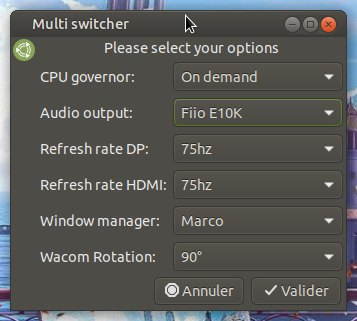Greetings,
I'm not a Noob to Linux but everything I've done has always been via Virtualbox for a few days. I've played mostly with Ubuntu flavors. Less of a fan of Mint, more of a fan of Budgie. Somehow Mate hit the sweet spot and stuck.
I've used Mac most of my life, switched to Windows 10 since intro, and so here are my thoughts from that POV. Mate on a two year old Celeron Mini PC.
-
In general I really like the stability improvements. I've only frozen once over the last two weeks (?) and that's an extremely good sign. Can't recommend an OS if it's not as stable as what it's replacing.
-
The speed jump in my scenario is amazing. Linux enthusiasts love to deploy the 'rescue' term and that's EXACTLY what this was. Wow.
-
In general Mate is presented in a logical clear way. I was able to find most things without breaking a sweat. (I previously found Budgie hiding too many settings.)
All this said, here are some issues I (personally) would like to see go away. And I recognize some of these notes are directed at Mate while others are at Ubuntu and still others are directed Linux in general.
-
I guess I could say that when something is missing in Mate that is included in basic operating systems everywhere, time to fix that. Recently I realized there was no easy way to do an 'About this PC'. I had to go to stumble upon 'Neofetch' and hit the terminal to install it. That's not optimal. It should be native.
-
From comments I've seen everywhere system scaling is lacking. Yes there are tricks to kinda sorta get around this. But again -- simple scaling should be native.
-
Time and date in the panel should be default.
-
This may be more difficult to make default but a system temp reader would really help. I was able to install something or other in the panel and it works fine.
-
This is a kind of wacky idea but perhaps you should consider installing alias apps in the menu. Suppose you went to system tools, right? And in it you saw an app greyed out. You hovered over it and it explained what it was and offered an install option. Click that and software boutique opens. In this way Mate could decrease the number of apps that come pre-installed -- and yet -- indicate likely suspects. I bet a lot of people don't need RhythmBox but would like to know it exists.
-
The entire Google keyring thing is handled poorly. Personally I think the entire feature should be erased. It's accidental nagware. If Google forces that message, then when first installing Mate some message should encourage you to leave the passwords blank and re-visit the issue later. Speaking of passwords --
-
-- I absolutely RESENT this modern password thing where MY system tells me IT doesn't like MY password. LOSE THAT. If I want to make a slight alteration to my system, or use a simple password -- it's MY choice. Sheesh...
-
I don't know the platform agnostic name for this feature but I know Ubuntu calls it 'Activities'. I simply want a FAST way to switch which window I'm using. Mac has it, Win10 has it.
My fave way to do this is 'hot corners'. If I put a pointer in the top left corner, it shows all open windows. From there I can either close some windows or switch to any one of them. LOVE IT. But if put a pointer in bottom right, all windows go away for a moment and I can see the desktop. Once you have (something like) this you'll never use an OS without it. Honest.
(The other way is via touchpad gestures. Three fingers up could show all open windows, three fingers down would reveal the desktop.)
- I believe the best way to have happy PCs is to run preventive measures. In Mac it was running a fsck. In Windows it's called an SFC. I've researched both and on Ubuntu it's not so easy. Whenever a user has to run a pile of terminal commands (versus just one) I believe Linux loses. I'd like a native app for each.
People on the web mistake lots of criticism and notes as negative. Understand if I was ditching Mate because of this list I'd say so. I'm not. I'm really really impressed.
But OSes always try to improve. These are just some suggestions.



 Soon you'll be feeling right at home.
Soon you'll be feeling right at home.